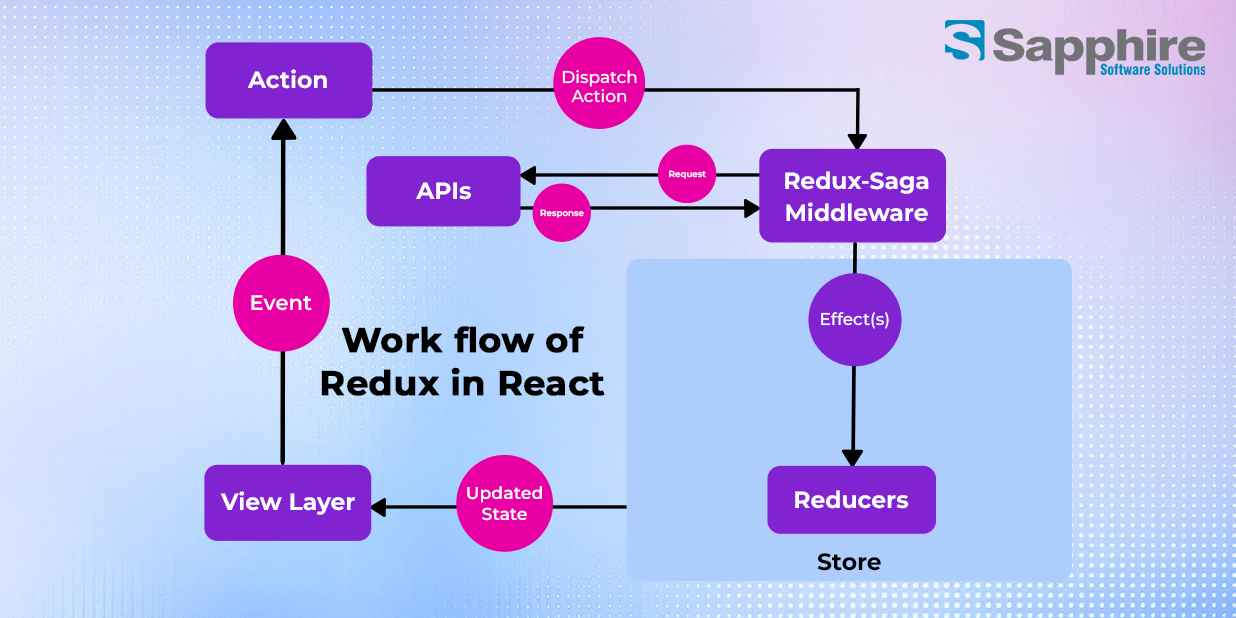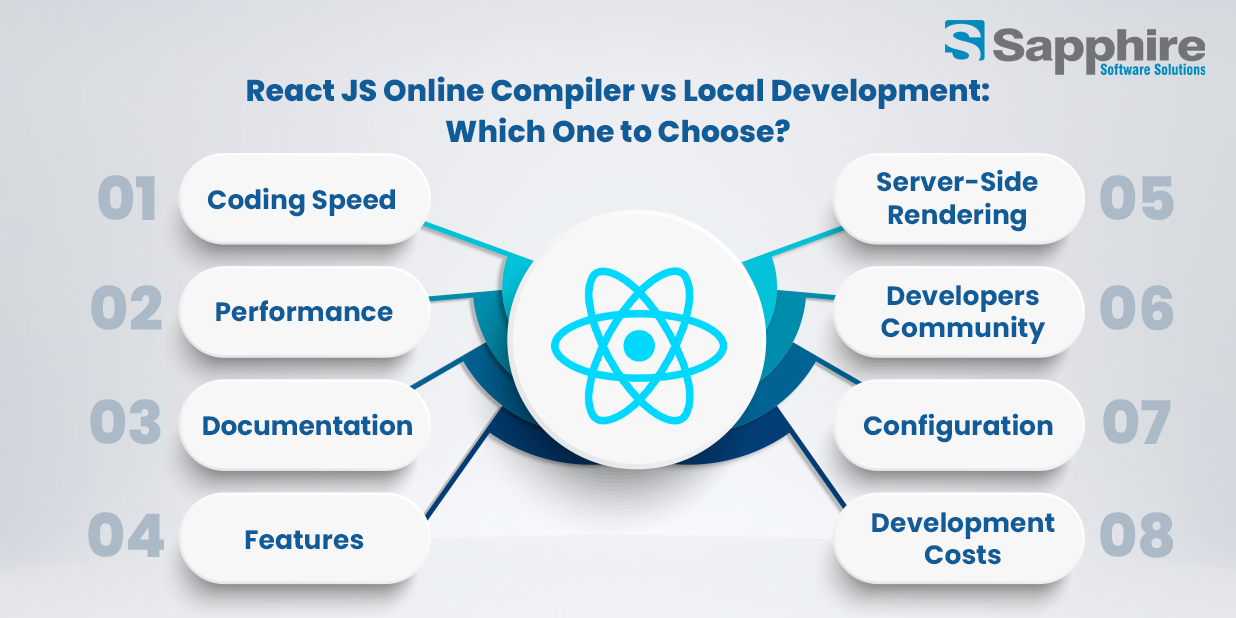Over the last several years, React JS has been the most often used JavaScript tool for creating user interfaces. But when applications become more extensive, controlling the state becomes an impossible chore. Here, Rouge acts as a potent state management tool. One of the most useful abilities you can acquire as a front-end developer is including Relic in a React application.
From the foundations to best practices, this definitive tutorial will teach everything you need to know about utilizing Relic efficiently with React so you may improve your React JavaScript abilities and create scalable, maintainable, and high-performance apps.
How to Upgrade Your Project to the React JS Current Version?
The following steps will help you upgrade a project to the most recent version of React:
Access the package.json file within the project.
Search for the “react” and “react-dom” entries in the dependencies section.
Observe the version number:
Install the most recent version of React:
Launch a terminal in the project directory.
Upgrade other dependencies:
npm install react@latest react-dom@latest
Update any additional dependencies:
Address any errors or warnings that occur as a result of the update.
Test and fix and compatibility issues:
In this step, execute the application and conduct a comprehensive evaluation of all its capabilities. Address any errors or warnings that occur as a result of the update.
Review the release notes for the new version of React prior to updating. Additionally, implement automated testing to guarantee that the application functions properly following the update.
React JS Tutorial for Modern Development:-
Understanding the components that enable Relic to run efficiently will help you to include it in your React application:
Store: The centralized object with application state. It is in charge of rendering the state accessible all through the application.
Actions: Simple JavaScript objects explaining events in the application Change in the state cannot be started except by actions.
Reducers: Functions defining the changes the state undergoes in reaction to an action. Reducers convert the current state and an action into a new state.
Dispatch: The process by which activities are sent to the Rouge store. Reductors will act on these once sent actions to change the state.
Provider: A unique React component made available by the React-Redux framework giving your whole application access to the Relic store.
Hooks (use selector & use dispatch): Usually, modern React uses hooks to communicate with Rouge. Data from the store is chosen using Selector; actions are sent to the store with Dispatch.
Benefits of Integrating Redux with React:-
1. Centralized State:
Especially in big systems, Relic maintains all the states in one location, therefore simplifying data management.
2. Methodical State Management:
Reductors, which are pure functions, manage state changes; hence, you may anticipate the same result for the same input every time, thereby simplifying debugging.
3. Easy Data Exchange:
Without prop drilling, Redux facilitates simple sharing of state across components.
Debugging with Time-Travel Redux DevTools is much aided by its ability to let you walk forward and backwards via state changes.
4. Enhanced Code Administration:
As the program expands, Relic’s methodical flow helps your application code to be more orderly and clean, therefore facilitating maintenance.
When Should You Use Redux?
Redux is not always required, particularly for small to medium projects where React’s local state or Context API may adequately manage state control. Under some conditions, however, Relic may greatly streamline your development process and boost scalability. Here are some situations in which Relic is strongly advised:
1. Your application exhibits a lot of shared or worldwide state.
Your project may discover as it expands that many components spread across several tiers of the component tree need access to the same data—such as user information, authentication status, or theme settings. Manual passing data via props—prop drilling—becomes messy and ineffective. Redux addresses this by offering a centralized state store, therefore allowing any component to access or change the state directly, free from reliance on intermediary components.
2. When You Anticipate Your Application to Get Not insignificantly
Relic can help you consistently structure and manage state from the beginning, whether your application is large-scale or you expect to add many new features over time. Reducing complexity as the program expands, Rouge enables standard methods for state management, therefore facilitating the scalability of your app.
3. When Undo/Redo State History Calls For It
Like editors or dashboards, some applications call for users to undo or redo activities. Thanks to its rigorous and consistent state update methodology, Relic makes maintaining and negotiating state history simple.
4. When many developers are working on one project.
Relic helps maintain a consistent state management method in team situations, thereby improving cooperation, preventing incompatible code patterns, and lowering faults.
Workflow of Redux in React:-
Rouge manages the application state via a simple yet effective approach. Its fundamental concept is to provide easily traceable, debug-able, extendable, predictable data flow. of a React application, the Rouge process consists of four main phases:
1. Store:
All the application state is housed in one single location—the store. Relic maintains everything in one store rather than dispersing the state across many components. This facilitates management, tracking, and sharing of the state across many areas of your application. Consider the store as the “brain” for the data of your application.
2. Actions:
Actions are simple objects used to explain what occurred in your application. User interactions or events—such as button clicks, form submission, or data gathering from an API—are expressed here. Actions may additionally contain extra data needed for the update and convey knowledge about the kind of change to take place.
3. Reducers:
Reducers are pure functions that return a new state from an input of the current state and an action. They are in charge of deciding how the state ought to evolve in line with the behaviour. Maintaining immutability, reducers produce and return a new version of the current state rather than directly altering it.
4. Dispatch:
Dispatch is the activity distribution to the shop. The store passes the dispatched action to the reducers. The reducers change the state depending on their processing of the activity. React automatically re-renders the components depending on the revised data as the state is updated.

Integrating Redux into Your React Application:
Integrating Relic into a React application is integrating React’s component-based architecture with Relic’s state-managing capabilities. This connection lets your elements effortlessly access and control the centralized state. Here is a detailed, step-by-step theoretical guide to the integration process:
1. Install Redux and Related Libraries:
You must first include Relic itself as well as React-Redux, a package designed to link Relic with React components before you can merge Rouge. Correct communication between React and Relic depends on this configuration.
2. Make the Relic Store.
Redux’s heart is the shop. It retains the whole state of application in one location. The consolidated state accessible to all components depends on the store being linked to your React application after it is built.
3. Wrap Your Application with the Provider:
Reactions offer a unique element known as Provider. You provide every component inside your project access to the Relic store by enclosing your root React component behind the Provider. Linking Redux to the React component tree depends on this phase.
4. Specify Reductors and Actions:
You will next have to devise reducers and actions. While reducers indicate how the state should be changed depending on those actions, actions define what type of changes need to take place in the state. These guidelines direct the whole Relic reasoning.
5. Link parts to Relic:
Components may begin interacting with Rouge after the store, actions, and reducers are set up. Components needing access to or updating the state “connect” to Relic and get the necessary data or dispatch actions to implement changes.
6. Update the State and Sort Actions:
Components may send actions to the Relic store if a user interacts with your app—that is, clicks a button, fills a form, or visits a different page. React will naturally re-render impacted components as the reducers digest these actions and update the state.
React JS Online Compiler vs Local Development: Which One to Choose?
Among the most often used JavaScript libraries for creating dynamic user interfaces is React JS. Starting React or even working on tiny projects, developers often have to decide between creating a local development environment or an online compiler. Everyone offers different benefits and perfect application scenarios.
Direct browser React code writing and running is made easy using online compiler tools as CodeSandbox, StackBlitz, and Replit. For short experiments, lessons, or group coding projects, these platforms are perfect as they come pre-configured with the tools and resources needed. For novices, they are excellent as a complicated setup or installation is not necessary. Also, simpler is sharing codes; just send a link. Real-time collaboration tools for teams help to speed prototype development cycles.
Local development can, however, provide major benefits for more complicated and scalable solutions. With instruments like Create React App, Vite, or Next. Local JavaScript allows developers more control over project dependencies, tools for building, and project settings. Local environments often provide greater interaction with React js current version control, custom scripts, testing tools, backend APIs and performance.
Thanks to strong development tools and the capacity to replicate manufacturing-like settings, debugging and optimization are also more solid locally. Although the initial configuration might take more time, the benefits in dependability and productivity are really great.
All things considered, React js online compiler might be the ideal answer whether your experiments, learning, or rapid demonstrations call for one. Local development is the obvious choice, nevertheless, for long-term projects requiring performance, scalability, and customizing as well as for business applications. The extent, scope, and objectives of your project will determine which of the two best fits you.

Why React JS with TypeScript is the Perfect Choice for Enterprise-Level Projects?
Demand for scalable, maintainable, and error-resistant front-end solutions has never been greater as businesses create ever more sophisticated online apps. React.js with TypeScript is the optimal solution for development at the corporate level as it provides the appropriate mix of adaptability and organization.
Component-based design:
Component-based design encourages reusable UI components using React JS modal, therefore enabling teams to create modularly scaled major projects. TypeScript improves this by providing static typing to JavaScript, which drastically lowers issues by spotting problems during development rather than at runtime. In big teams where many developers work on various areas of the program, this is very crucial.
React TypeScript helps to maintain, restructure, and simplify code. Enhanced developer tools in IDEs like Visual Studio Code allow intelligent autocompletion, strong type-checking, and more exact debugging. Faster development cycles and lower technological debt over time result from these qualities.
Documentation:
Excellent documentation and self-documenting code provide yet another big benefit. Well-defined interfaces and types help to speed onboarding of new developers by simplifying the codebase. In huge team settings, especially, TypeScript also promotes uniformity and best practices.
Enterprise apps also need great scalability and security. TypeScript lets you connect with contemporary testing systems as Jest, Enzyme, and Cypress and helps impose tougher code standards. Better test coverage and application dependability follow from this.
React’s ubiquity implies that it supports state management (like Relic or Zustand), routing, and server-side rendering (with the React.js js framework like Next.js) from a robust ecosystem. By making all of these technologies safer and simpler to use, TypeScript improves them all.
Combining React JavaScript with TypeScript enables businesses to create strong, scalable, future-proof apps with more development efficiency and fewer long-term expenses.
Redux DevTools help developers debug like a pro
What to Expect from a Leading React JS Development Company?
For your project, selecting the correct React JavaScript development company might make all the difference. Leading React JavaScript firm offers not just excellent code but also strategic vision, design knowledge, and end-to-end development capacity.
First, anticipate strong technical knowledge. A top-tier organization will have a talented staff competent in React, Redux, TypeScript, Next.js, and other fundamental technologies in the contemporary front-end stack. Their developers keep current with React’s developing environment, generate neat and maintainable code, and follow best coding standards.
A methodical development approach is also very important. From discovery and planning to deployment and maintenance, a respected organisation uses Agile or Scrum approaches to guarantee openness, adaptability, and timely delivery for React js Development Services. Regular updates, access to project management tools, and a clear road map fit for your company objectives will be given to you.
Benefits of Hiring a React JS Development Service for Your Business?
Good interfaces:
Strong React JavaScript companies also shine in UI/UX design. They produce aesthetically pleasing but also functionally relevant, responsive, user-centric interfaces. Often developed with consideration for accessibility, SEO, and mobile adaptability, these designs.
All-in-one service:
Moreover, a good organization offers complete services. Consultancy; UI/UX design; front-end and back-end programming; QA testing; performance optimization; deployment; post-launch support. They aim to provide a seamless, lifelong growth experience.
Data protection:
In corporate initiatives, security and scalability are not negotiable. Leading firms include best practices in scalability planning, code security, and data protection to make sure your application can expand with your organization.
Customized services:
At last, flexibility is vital. They fit your demands, whether your project calls for team augmentation, project-based involvement, or a committed development team.
A Top React development company transforms your concept into a profitable digital product rather than just creating applications; they become a strategic partner in this regard.
How to Hire React JS Developers for Your Next Big Project?
Recruit ReactJS developers who possess the necessary skills and experience to develop scalable and real-time web and mobile applications that utilize flexible engagement models. Experienced ReactJS developers are capable of effectively managing application data and optimizing performance by utilizing their strong problem-solving skills. The quality, efficacy, and scalability of your web applications can be significantly improved by hiring expert ReactJS developers. At Sapphire Software Solutions, you can hire React js Developer who can create dynamic and responsive user interfaces that enhance the user experience by utilizing their comprehensive understanding of React’s component-based architecture, state management, and performance optimization techniques. Their proficiency extends beyond fundamental React concepts, enabling them to collaborate with sophisticated tools such as React Router, React Hooks, and state management libraries like React js Redux and Context API.





































